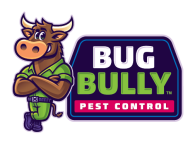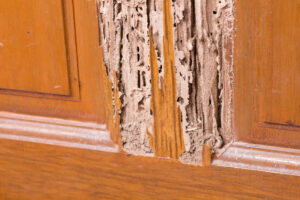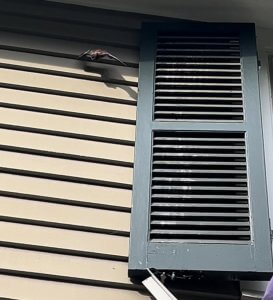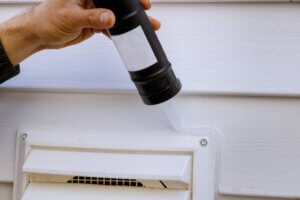DIY Tips for Brave Homeowners
Massachusetts, with its picturesque landscapes and diverse ecosystems, offers a pleasant living environment but also presents certain challenges, such as dealing with wasp infestations. Wasps, while beneficial as natural pest controllers, can pose a significant threat when they establish nests close to human activities. Homeowners in Massachusetts may encounter various wasp species, including paper wasps, yellowjackets, and bald-faced hornets. Each species has distinct behaviors and nesting habits, requiring specific approaches for safe removal. This guide outlines effective DIY methods for handling wasp nests, the best time of day to undertake such tasks, and when it is prudent to call a professional wasp nest removal company like Bug Bully Rodent & Pest Control.
Understanding the Wasps of Massachusetts
Before discussing removal strategies, it is essential to identify the types of wasps that might be present around Massachusetts homes. Knowing the species can help determine the appropriate response and safety precautions.
Paper wasps are relatively docile compared to other wasp species. They construct small, open nests resembling an upside-down umbrella, often found under eaves, in attics, or attached to garden structures. While generally non-aggressive, paper wasps will defend their nest if they feel threatened.
Yellowjackets are more aggressive and can sting multiple times. They are known for their distinctive black and yellow markings and prefer building nests in hidden areas such as underground burrows, wall voids, or attics. Their enclosed nests can house thousands of wasps, making them particularly dangerous.
Bald-faced hornets are actually a type of yellowjacket, distinguishable by their black and white coloring. They build large, football-shaped paper nests, usually high up in trees or attached to buildings. These hornets are highly aggressive and will defend their nests vigorously.
DIY Methods for Wasp Nest Removal
Homeowners may choose to remove wasp nests themselves, especially if the nests are small and accessible. However, it is crucial to approach the task with caution and proper preparation to minimize risks.
Preparation and Safety Precautions
Safety is paramount when dealing with wasps. Protective clothing should cover the entire body, including long sleeves, pants, gloves, and closed-toe shoes. A beekeeper’s veil or face shield is advisable to protect the face and neck. Wasps can become agitated by bright colors and strong scents, so wear neutral clothing and avoid perfumes or colognes.
Equip yourself with a wasp spray designed to reach long distances, as this allows you to maintain a safe distance from the nest. It is also helpful to have a flashlight if working in low-light conditions, though it is best to avoid direct light on the nest as this can disturb the wasps.
Safe Removal Techniques
One summer evening, a homeowner in western Massachusetts discovered a paper wasp nest hanging from the eaves of their garage. Knowing the risks but also confident in a DIY approach, they waited until dusk, donned protective clothing, and used a wasp spray to eliminate the threat. The wasps, sluggish in the cooler evening air, were less responsive, and the homeowner successfully removed the nest without incident. This experience highlights the importance of timing and preparation in safely managing wasp nests.
For paper wasps, approach the nest slowly and calmly in the early morning or late evening when wasps are less active. Stand at a safe distance and thoroughly spray the nest, ensuring the chemical reaches all wasps inside. Wait until there is no movement around the nest before carefully knocking it down with a long pole or similar tool. Place the nest in a sealed plastic bag and dispose of it properly.
When dealing with yellowjackets, particularly those nesting in the ground, the same timing applies. Use a specialized ground-nest wasp spray and aim directly into the entrance. Yellowjackets can be aggressive, so retreat quickly after spraying. Monitor the nest over the next few days; if activity continues, a second application may be necessary. For nests inside walls, avoid sealing the entrance after treatment until you are certain all wasps are dead, as sealing too soon can trap live wasps indoors, leading to potential stings.
Bald-faced hornets require extra caution due to their aggressive nature. Their nests are often high and may require a ladder for access. In these cases, it is particularly crucial to work during cooler parts of the day. Spray the nest thoroughly from a distance, then retreat immediately. Given their aggression and the potential danger, it is often best to leave bald-faced hornet nests to professionals.
Best Time of Day for Wasp Nest Removal
The timing of nest removal is critical for safety and effectiveness. The best times are early morning and late evening, as wasps are less active and tend to be inside the nest during these periods. Cooler temperatures make the wasps slower and less aggressive, reducing the likelihood of stings. Furthermore, wasps navigate using daylight, so working in low light can make them less likely to swarm.
When to Call a Professional
While DIY methods can be effective for small nests, certain situations necessitate the expertise of professional pest control services like Bug Bully Rodent & Pest Control. Professionals have the experience, tools, and protective equipment needed to safely and effectively deal with large or dangerous nests.
Large or Inaccessible Nests
Nests that are large or located in difficult-to-reach areas, such as high up in trees, inside walls, or underground, pose significant risks. Attempting to remove such nests without proper equipment can lead to serious injuries. Professionals have the necessary tools, such as specialized sprays, ladders, and protective gear, to handle these situations safely.
Aggressive Species
Certain wasp species, such as yellowjackets and bald-faced hornets, are known for their aggressive behavior and ability to sting multiple times. If you encounter these wasps, especially in large numbers, it is best to call a professional. Bug Bully Rodent & Pest Control can safely remove these nests and provide advice on preventing future infestations.
Allergic Reactions
Individuals with known allergies to wasp stings should never attempt to remove a nest. Even one sting can trigger a severe allergic reaction, which can be life-threatening. In these cases, contacting a professional is not just recommended but essential for safety.
Recurring Infestations
If wasps frequently build nests around your home, it may indicate an environmental factor that attracts them. Professionals can assess your property, identify these factors, and implement measures to deter wasps in the future. This might include sealing potential entry points, removing food sources, or applying preventative treatments.
Choosing the Right Pest Control Service
Selecting a reliable pest control service is crucial for ensuring the problem is handled effectively and safely. Bug Bully Rodent & Pest Control, for instance, is known for its comprehensive approach and professional service. When choosing a service, look for companies with positive reviews, proper licensing, and insurance. It’s also beneficial to inquire about their methods and whether they offer eco-friendly options. A good pest control company will provide a thorough inspection, a clear treatment plan, and follow-up services to ensure the issue is fully resolved.
Preventative Measures
After removing a wasp nest, it is important to take steps to prevent future infestations. Regular inspections of your property, especially in spring and summer, can help catch nests early before they become a significant problem. Seal cracks and gaps in your home’s exterior to prevent wasps from entering. Keep food and garbage securely stored, as these can attract wasps. In addition, consider installing decoy nests around your property; wasps are territorial and may avoid building nests in areas where they believe another colony already exists.
Conclusion
Dealing with wasp nests in Massachusetts requires careful planning, the right equipment, and a clear understanding of the risks involved. While DIY methods can be effective for small, easily accessible nests, large or aggressive nests should be handled by professionals like Bug Bully Rodent & Pest Control. Identifying the type of wasp, timing the removal correctly, and taking the necessary safety precautions are crucial steps in safely managing wasp infestations. By following these guidelines and staying vigilant, homeowners can protect themselves and their families from the potential dangers of wasp stings. Remember, when in doubt, it is always safer to seek professional assistance.











